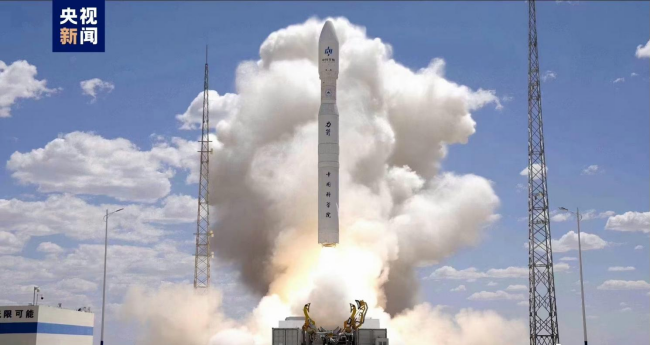At 12:10 on June 7th, the Cosmic X-ray Polarization Detection(CXPD) Cubesat, developed by Guangxi University’s School of Physics Science and Technology, achieved a resounding success as it soared into the sky aboard China's largest solid rocket, Lijian-1 Y2, at the Jiuquan Satellite Launch Center.
At 13:50, confirmation of the successful separation of the satellite from the rocket was received, marking a crucial milestone in the mission. Subsequently, at 14:00, telemetry data was received, confirming the satellite's status and confirming the resounding success of the launch mission.

The CXPD Cubesat, serving as a prototype for the Low-Energy Polarization Detector (LPD) of China's Space Station Gamma-Ray Burst Polarimeter (POLAR-2), has been launched to undertake space flight verification. This cutting-edge instrument is designed for space-based X-ray polarization detection, with the aim of unraveling the magnetic fields, geometry, and radiation mechanisms of high-energy celestial bodies. Its mission holds paramount significance in advancing our understanding of astrophysical phenomena.
Developed independently by the CXPD Collaboration Group, led by Guangxi University, the CXPD Cubesat showcases the outcome of domestic technological innovation. Rigorous performance testing, calibration experiments, and simulated space environment trials have validated its capabilities.
The successful launch of the CXPD Cubesat marks a breakthrough in the key technologies of X-ray polarization detection for the CXPD Collaboration Group, laying a solid foundation for Guangxi University’s involvement in other research tasks related to China’s space station. This significant achievement underscores the commitment and dedication of the collaborative efforts, opening up new avenues for cutting-edge research in space science.
 Home
>
News & Events
>
News
Home
>
News & Events
>
News
 Home
>
News & Events
>
News
Home
>
News & Events
>
News




